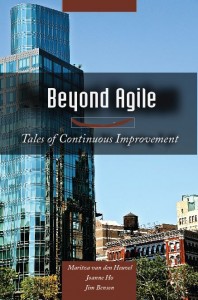The following is a guest post by Victor Bonacci. Question #1: Do you like coffee?
I do. I enjoy it warm or on ice. I love the smell. I get excited with the neurochemical reactions it stirs in me. I find calmness in the process of brewing a cup. It’s a fun word to say: “coffee.”
Coffee is a casual sport. Grabbing a coffee with a friend or colleague is often an impromptu act. Someone is more likely to agree to meet for coffee than to accept my invitation to dinner.
With coffee, the investment is low. Topics are light and change rapidly. The environments where we drink our coffee often vary in eclectic and inviting ways.
Question #2: Do you like meetings?
I’m going out on a limb to guess that you may not hold the meetings in high esteem. A typical work meeting runs too long, is unexciting (if not downright boring) and usually less effective than it can be. The conversation may be more monologue with one person dominating - usually the one who arranged the meeting. The meeting’s agenda is pre-planned with perhaps no collaboration or input.
I don’t know about you, but I see the score as “coffee: 1, meetings: 0.”
Whose Reality Is It Anyway?
This is why I love Lean Coffee. It replaces the tyranny of the meeting with something that is effective, engaging and (dare I say) fun. (We can’t say that in the office, though, where “Fun” is a four-letter word.)
Lean Coffee meetings (I often refer to these simply as “coffees”) are, in the Agile parlance, self-organizing. They get us involved. The coffees stimulate our natural curiosities and keep us from answering multiple choice questions with a “true/false” answer.
You’ve heard the parable of the blind men describing the elephant. We each have our own perspective - our own “reality tunnel” as Tim Leary was fond of saying. At a coffee, topics get considered and described by any number of perspectives, each voice providing a slight turn to reveal different facets. It’s the “wisdom of crowds” rule: the more voices contributing the the conversation, the closer to the “truth” we can arrive.
I’ve used lean coffees in a multitude of settings, and I’d like to highlight two. If you’re already familiar with the mechanics, it’s easy to imagine meet-ups or retrospectives using this lightweight format, so I’ll skip those in favor of some less obvious applications.
One for the Roadmapping
First let’s consider the workplace. I’ve alluded to using coffees in retrospectives, but what if you’re not a Scrum / Agile shop? There may still be a number of meetings that can follow the Lean Coffee format. One that I’ve had success with recently is tied to the Roadmapping process, a staple of the yearly business cycle. I work with technology folks who, independent of the sales pipeline, are asked to list, size and prioritize some set of initiatives that are either wanted (eg. trying out a new language) or needed (eg. addressing tech debt) by the engineering departments.
When I try to recruit participants (usually a subset of architects, team leads, etc.) for a roadmap planning session, everyone spontaneously seizes up and/or runs from the room. If on the other hand I invite them to a planning coffee, curiosity may outweigh feelings of obligation. When the dozen-or-so victims, er, members arrive, they see an inviting table with index cards, markers and coffee carafes (optional). We chit chat until enough people are there to begin, not always waiting for or worrying about the stragglers. A quick explanation of the coffee rules, and we’re off writing our wishlist items onto 3x5 cards. People are out of their chairs, their brains getting more oxygen then at standard (death-by-)meetings, and the mood stays light. Cursing about this or that “problem” with our current development environment often elicits chuckles from across the table.
Affinity mapping the cards is a fantastic cue for glimpsing the importance of a topic, but we still do some dot-voting after each topic card (or group of cards) is summarized. If we ended the meeting at this point, we’ve already collected more information transparently and asynchronously in under ten minutes than we could have hoped for in a two-hour session going around the table with each representative speaking up in turn. Still, we play out the hour-long event asking questions of and examining the top few topics.
For roadmapping, I’ll take these data (topics cards, votes, added explanations) and compile it onto some shared document. Others throughout engineering are free to read this and add or update as they like. I’ve been successful using other methods (such as DeBono’s Six Thinking Hats) to add more dimension to the list before turning it over to engineering leadership. The CTO appreciates that the entire exercise not only spanned days (not weeks), but also remarks how pleased she is that the department “owns” (has defined and is accountable for) the list. It makes her job of negotiating with other management much easier.
Cast a Wide Coffee
Another application that caught me by surprise came as an offshoot of our community meetups. Like most of our caffeine-fueled sessions, the topics were interesting and the discussions lively at the coffeehouse in February, 2014, and I didn’t want the conversation to simply fade into the ether. So I put the topic out there: recording the coffees to make a podcast. Heads nodded as encouragement and suggestions flowed. So I bought some basic recording equipment (mics, cables, a small mixer) and invited a small number of regulars to a special event.
We arrived to record a show with only a modicum of nervousness. (For my part, I was mostly occupied with the technical aspects of recording.) As soon as we began the actual coffee, however, nerves were forgotten as the conversation took over. There was no script, no set of pre-determined questions to cover. Only the cards.
The Agile Coffee podcast is now twenty episodes into its life, with no sign of slowing down. And although we’ve got a few hundred downloads each week, I find incredible value in simply re-playing the conversations that I’ve already participated in. I hear more, nuances that I missed in earlier listens or applications that make sense to my present self and situation.
We are experimenting with twitter and other media to enlarge the conversation, driving voices to our forums to continue the dialog after the timebox has expired. So far we’ve only recorded the voices of participants physically at the same table, but we’ve got plans to use Skype or other means to bring enough fidelity to have a rich coffee with people geographically dispersed.
Last Call
One final tip I’d give is: no matter how you use Lean Coffee, holding an occasional retrospective on your process will help make future coffees more effective. You may decide to extend or shorten the timebox, for example; or decide to accept new cards (and re-vote) mid-coffee. Changes that allow the group to make the Lean Coffee experience more meaningful should be the goal. You may also come up with alternative applications for coffees during the retrospective, ideas that may otherwise not surface.
And when these alternative uses surface, take a chance and try Lean Coffee. Let others know how you’ve used it, and share your results. Do your part to kill tyranny of the bloated meeting, replacing it with a fine brew of Lean Coffee.
Victor Bonacci (@AgileCoffee) is a coach and community organizer in Southern California. He produces the Agile Coffee podcast and blogs at agilecoffee.com. Vic will be the facilitator of the Agile Coach Camp in Irvine, CA, from April 10-12, 2015.


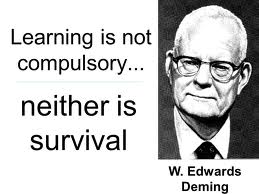

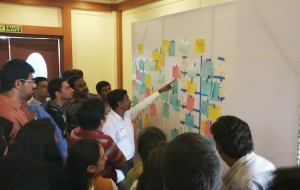
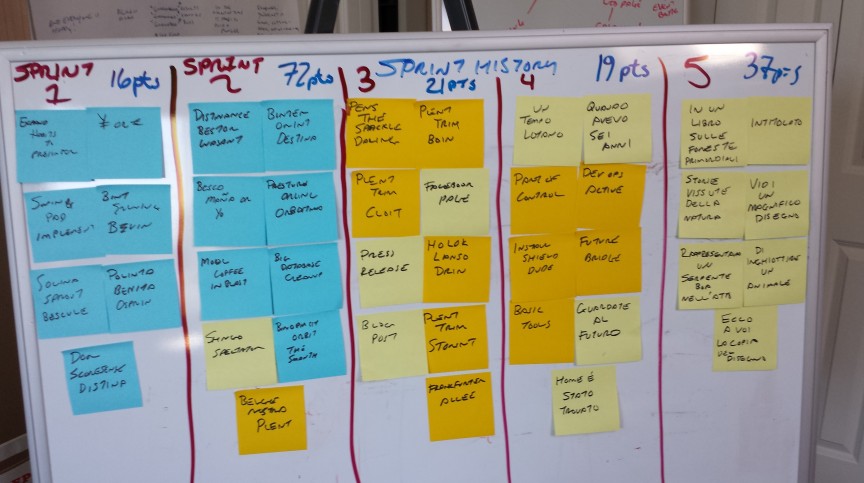
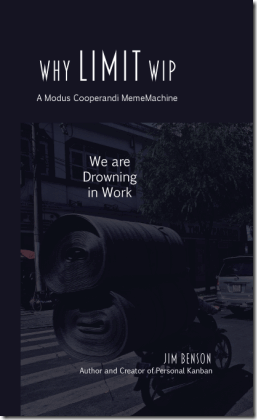
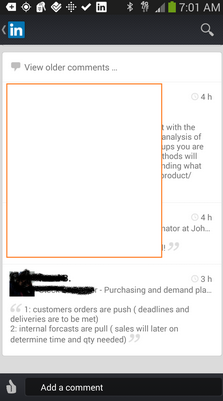

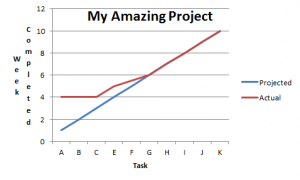
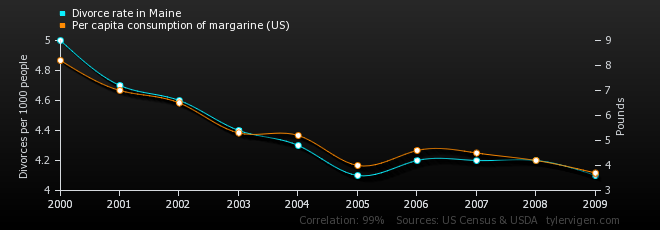
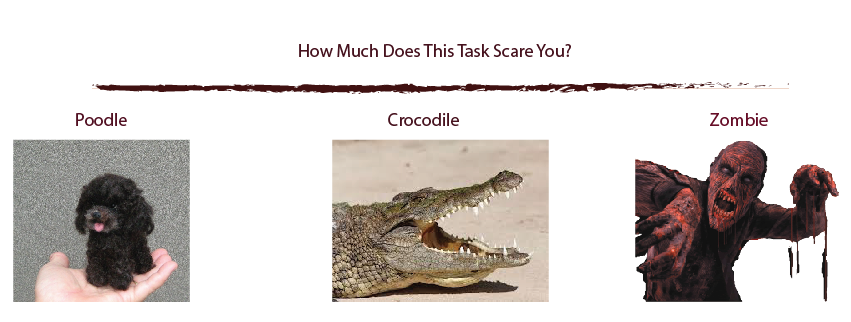
 Work is either not scary at all, kind of scary (but in a way you can shoot it), and scary in a way that you’re just unequipped to handle. Or, as we might call them, Poodle, Crocodile, and Zombie.
Work is either not scary at all, kind of scary (but in a way you can shoot it), and scary in a way that you’re just unequipped to handle. Or, as we might call them, Poodle, Crocodile, and Zombie.






